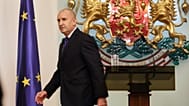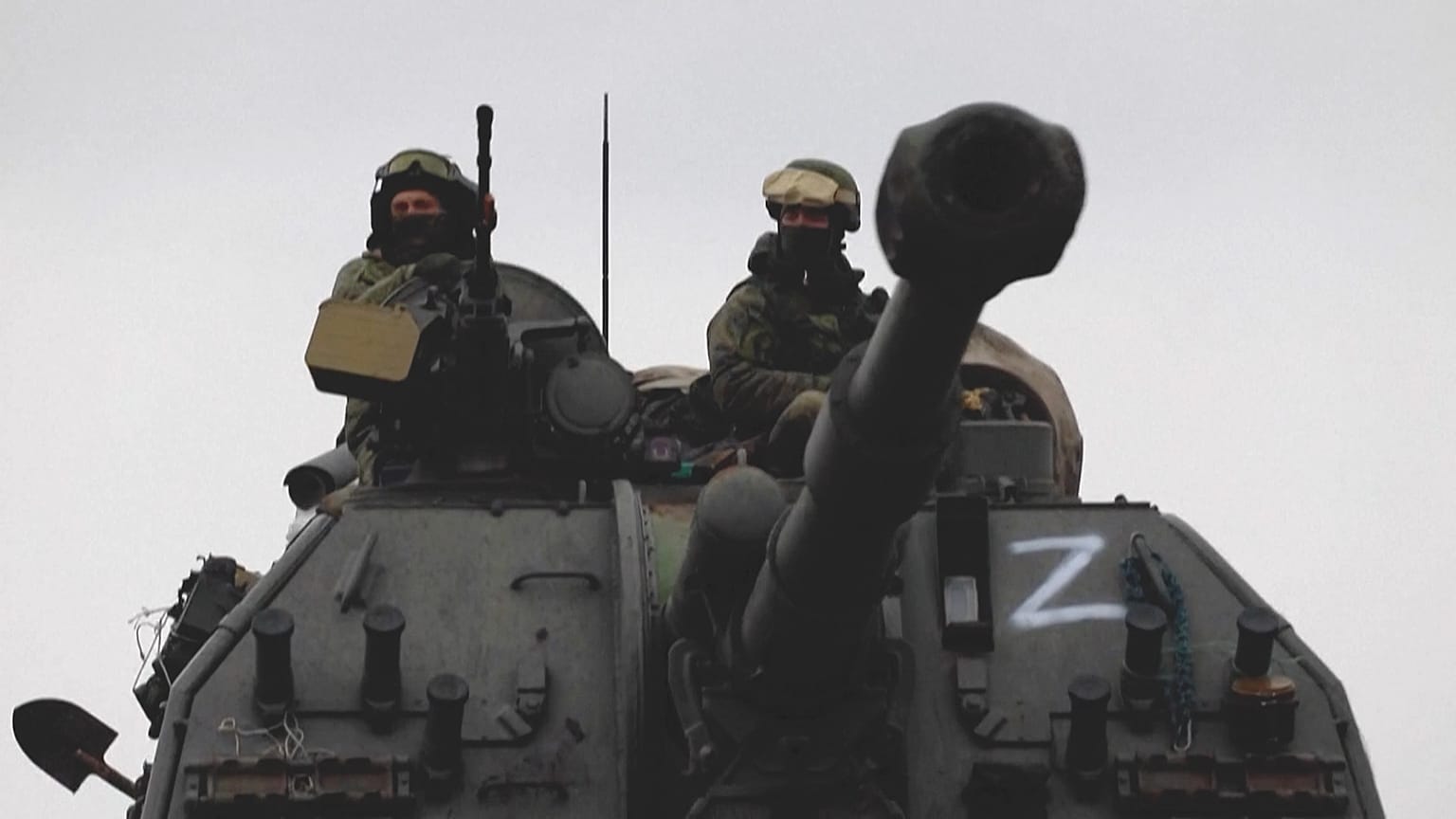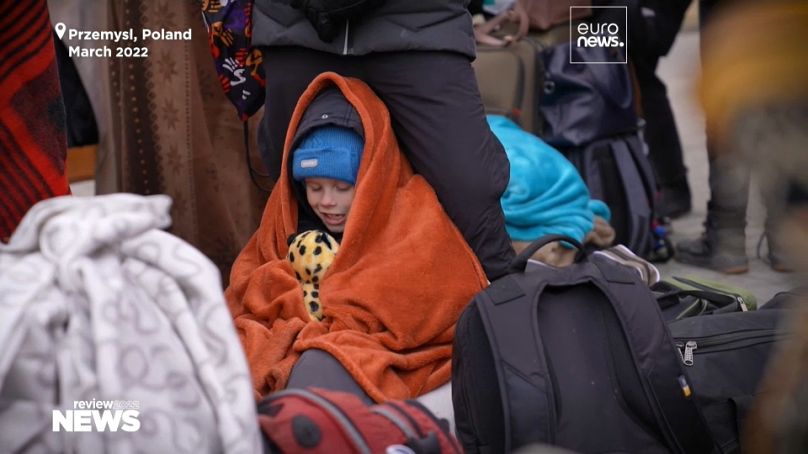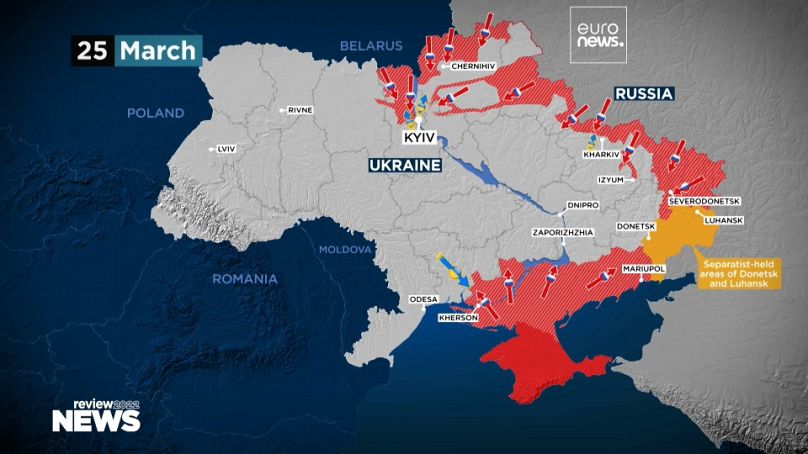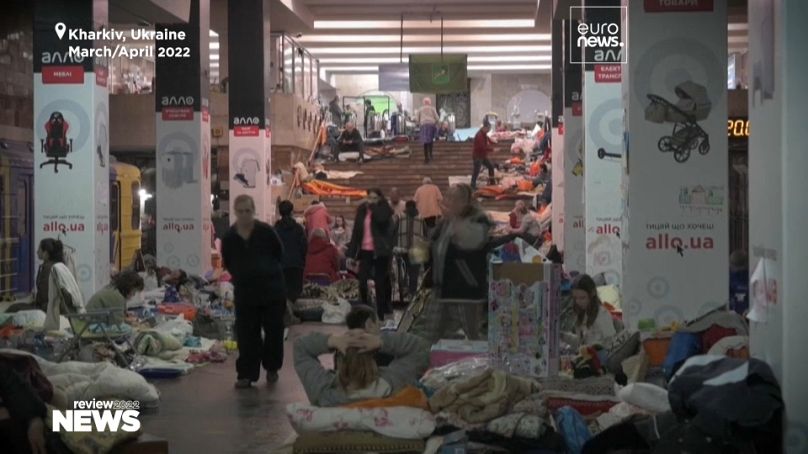Euronews takes a look back at how the war started in Ukraine and how it’s affected so many people’s lives since February the 24th
As 2022 comes to a close, we take a look at how the events in Ukraine unfolded after Russia invaded the country.
In the early hours of February 24 2022 Russian President Vladimir Putin launched a large-scale invasion of Ukraine.
"I have decided on a special military operation," explained Putin.
February 24
Explosions were heard in the Ukrainian capital Kyiv and other parts of the country. The war has since killed hundreds of thousands, displaced millions, and destroyed entire cities in Ukraine.
Before the escalation, there were weeks of diplomacy talks, including a French and German visit to Moscow, and Western sanctions failed to deter Putin. He stressed that his demands that NATOs pullback of troops from Eastern Europe and ban Ukraine from ever joining the alliance, were not met.
Russia attempted a "Blitzkrieg", and the troops entered the country from several directions. The plan was to take Kyiv and overthrow the Ukrainian government in a week.
But Kyiv held firm and Ukrainian president Volodymyr Zelenskyy refused a US offer to evacuate, saying, that the fight was in Ukraine and that he needed ammunition and not a ride out of the country.
In the East, Kharkiv, the second largest city, was pummelled by strikes day and night. As in many other places the bitter fighting forced families underground, to shelter in the metro or basements.
Evacuations
In Irpin, a city on the outskirt of Kyiv, people desperately tried to escape the shelling along a dangerous evacuation route.
Many civilians ended up in the crosshairs of war and were forced to flee. Most (90 %) of them were women and children, as Ukrainian men aged between 18 and 60 had to stay to fight.
According to the United Nations an estimated eight million people were internally displaced in Ukraine by the end of May.
And more than seven million Ukrainians crossed the border and were recorded as refugees all across Europe.
Poland was one of the main countries of arrival.
Alina Kosinska, a 30-year-old dentist, was one of those people crossing the border and upset to leave her home in Ukraine.
"I lost my home, I lost my normal life," Alina said. "I had a job there, but now I need to run away from my country because some crazy person wants, I don’t know what he wants."
End of March and early April
The Russian army had invaded the country from four sides. But the Ukrainian troops managed to halt the advance and pushed back. At the end of March, Moscow moved its forces away from Kyiv and the North towards the South and East of Ukraine.
During the Russian offensive to seize all of Donbas, in early April, a Russian missile strike on a train station in Kramatorsk, killed more than 50 civilians.
One tragedy among many, as the war continues, leaving behind a trail of pain and destruction.



